Pad thai is the quintessential Thai noodle dish, and for good reason! This authentic spicy chicken pad thai recipe brings your favorite take out noodles home, in under 30 minutes! Pair these noodles with homemade chicken satay for a full-on restaurant experience at home.
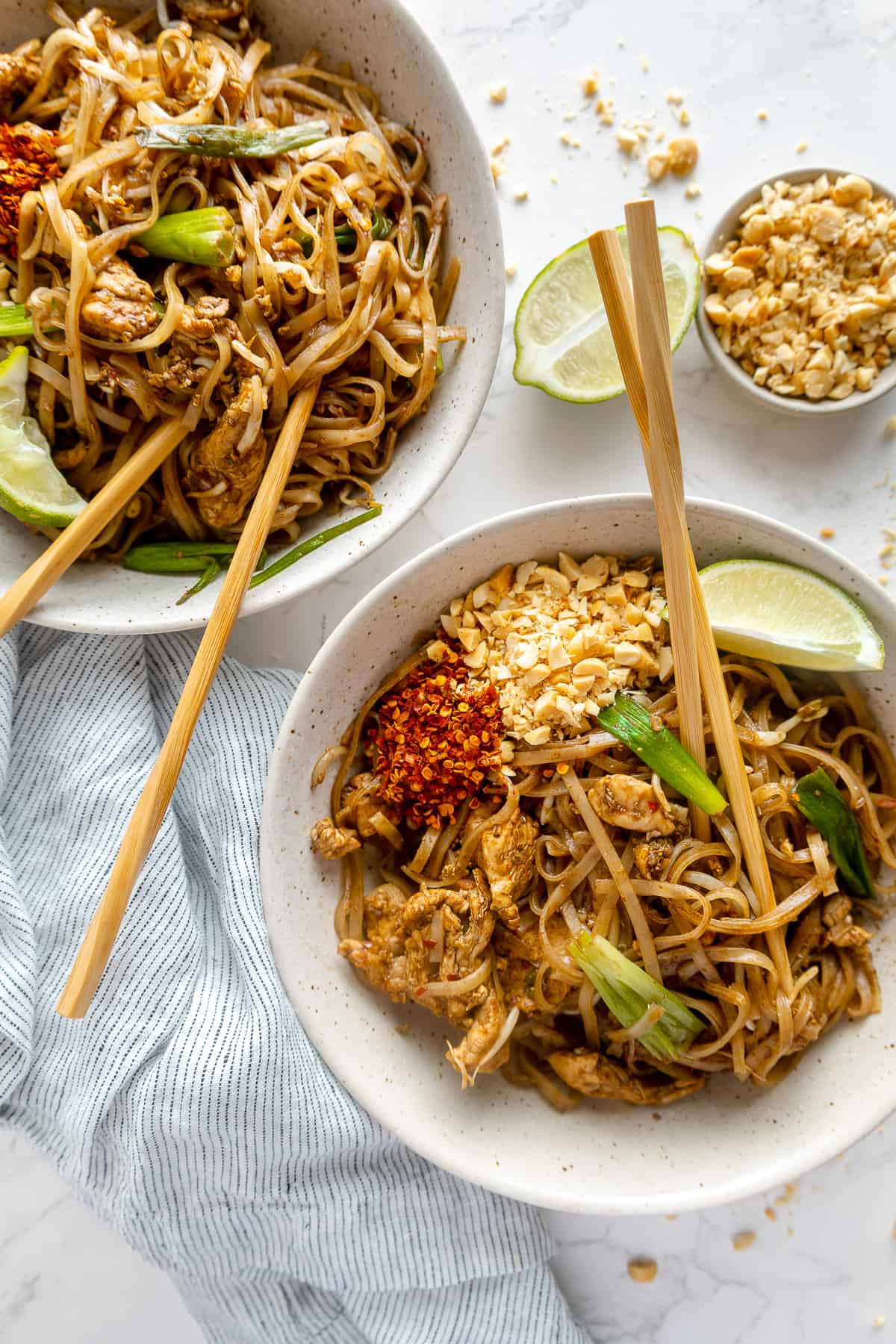
Jump to:
👩🏽🍳 Why This Recipe Works
- Quick and easy meal: These pad thai noodles are a complete meal all on their own, which makes for an easy dinner choice. Stir fry recipes like these noodles and these black pepper beef udon noodles move quick which means you can have lunch or dinner on the table ASAP!
- Full of flavor: Authentic Pad Thai, in fact most Thai recipes like this coconut curry soup, and these One Pot Spicy Thai Noodles are packed with the perfect balance of different flavors. From the sweet and tangy tamarind to the umami of fish sauce, all rounded out with the perfect balance of spicy heat and the nutty crunch of peanuts, there are no boring bites here!
- Easily customizable: As with most stir fry recipes, this pad thai dish is easily customizable with your favorite add-ins and as much or as little heat as you'd like.
🥘 Ingredient notes
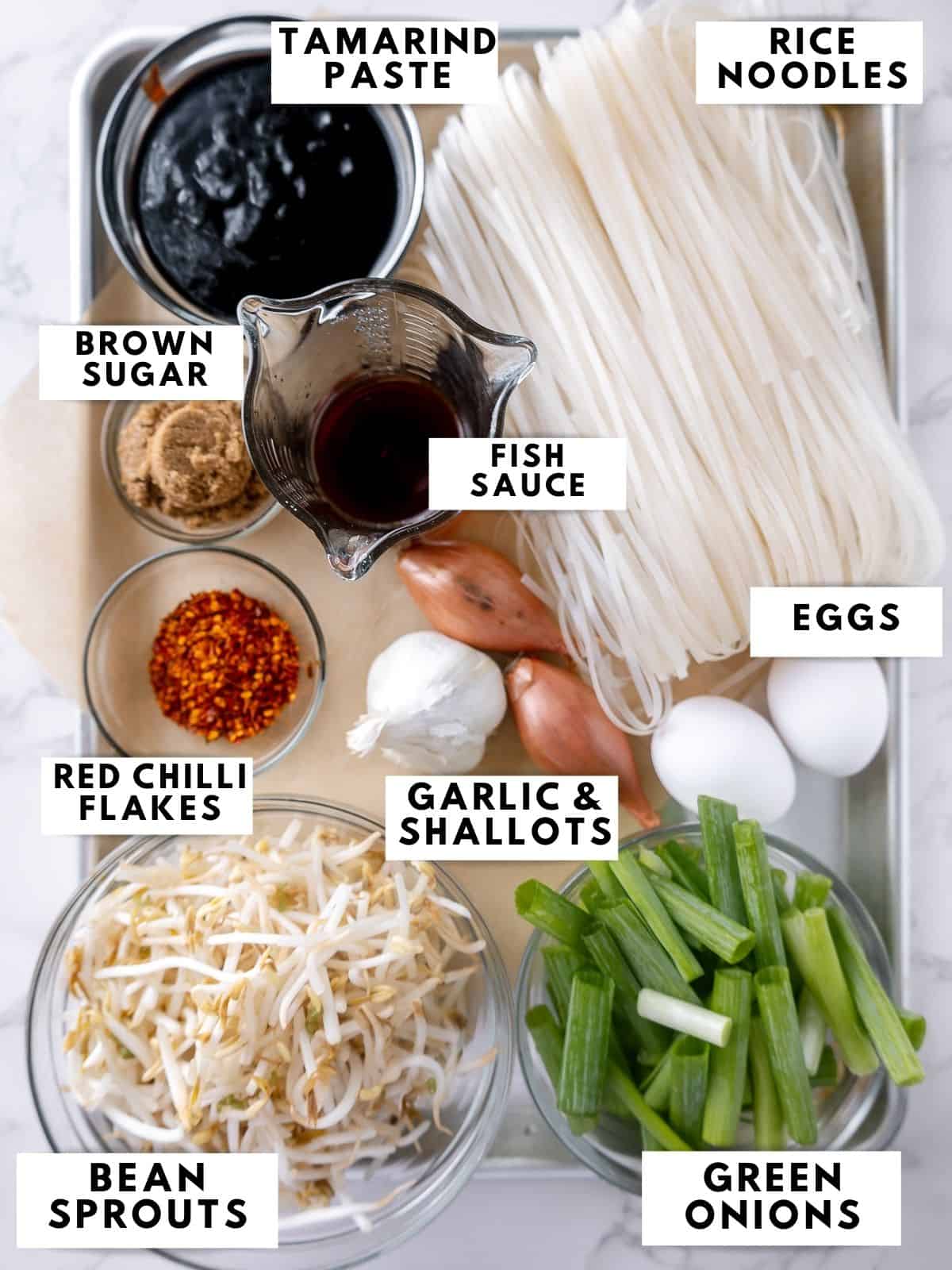
- Rice noodles: Thinner, flat rice noodles are ideal for pad thai recipes. These noodles are generally thicker than thin rice vermicelli noodles, but are thinner than the noodles you will usually see in dishes like pad see ew or ho fun.
- Tamarind paste or concentrate: Tamarind is one of the main ingredients in pad thai sauce. It is very important to note that there is a difference between Indian tamarind paste and Thai tamarind paste. Indian tamarind is highly concentrated, and is typically darker, stickier, and much more sour in flavor. The two types of tamarind paste are not interchangeable.
- Fish sauce: Fish sauce is a key element in a well-balanced pad thai sauce. Fish sauce adds that umami (savory) flavor, but do not worry about the sauce becoming overly fishy in taste.
- Dried Thai chili flakes: Thai chili flakes can also be labelled as prik bon, which are dried thai chili peppers as opposed to slightly milder red pepper flakes that you would typically find in the grocery store. These chili flakes are very commonly used as a condiment for many Thai recipes.
- Brown sugar: Traditional and authentic pad thai sauces use palm sugar for the element of sweetness. If you do not have many uses for palm sugar, brown sugar works, just as I have used in this recipe. Brown sugar has a similar depth of sweetness, and is more commonly found in your pantry.
A full list of ingredients with measurements is located on the recipe card, below.
📖 Substitutions
- Chicken breasts: Feel free to substitute with boneless chicken thighs, or you can even use rotisserie chicken in a pinch - although that is definitely less authentic.
- Tamarind concentrate: Many Americanized pad thai recipes use ketchup instead of traditional tamarind concentrate. Ketchup is not what you would traditionally find in Thailand, but it can work as a substitute for the sour element that tamarind adds to the sauce.
- Green onions: For an even more authentic version of this recipe, use garlic chives for the green, crunch element in this stir fry.
- Thai chilli flakes: Regular red pepper flakes will work in place of Thai chilli flakes. You can also use sriracha if you prefer.
🔪 Variations
- Mild: You can make this pad thai stir fry as mild or as spicy as you'd like. You can dial down the chilli flakes in the sauce, to keep things tame.
- Seafood: Add fresh shrimp to the stir fry for a seafood twist to chicken pad thai.
- Vegetarian: Ditch the chicken or seafood, and use puffed tofu for a vegetarian version of this noodle stir fry dish.
- Curry: Add in a heaping spoon of your favorite red or yellow curry paste, to turn this into curry pad thai.
⏲️ Step-by-step Instructions
Prep Work Before Cooking
- Collecting all your ingredients: This will make cooking so much easier. Gather all the spices you will need, and keep them nearby.
- Mince the garlic and shallots - Mince the garlic and shallots as finely as you can. If you prefer, you can add them to a blender or chopper to get a paste-like consistency.
- Thinly slice the chicken - Slice chicken breasts into thin slices, across the grain.

Mix together the ingredients for the pad thai sauce in a liquid measuring cup or a small mixing bowl. [photo 1]
Bring 1L of water to a boil in a kettle or in a large pot on the stove. Pour the boiling water over the rice stick noodles in a large heat-safe bowl. Submerge the rice sticks in the water completely using tongs, and leave the noodles to soften for 10-15 minutes. Once the noodles are pliable and tender, drain and set aside. [photo 2]
Heat a large skillet or wok over high heat. Add 2 tablespoons of vegetable oil to the skillet, and add the sliced chicken breasts. Leave the chicken to sear for 1-1 ½ minutes before giving it a toss. Season the chicken with a light sprinkle of salt, and remove the chicken from the skillet once cooked through. Keep aside in a bowl. [photo 3]
Add another 2 tablespoons of oil to the same skillet or wok. Lightly saute the minced shallots and garlic, until they are slightly softened. [photo 4]
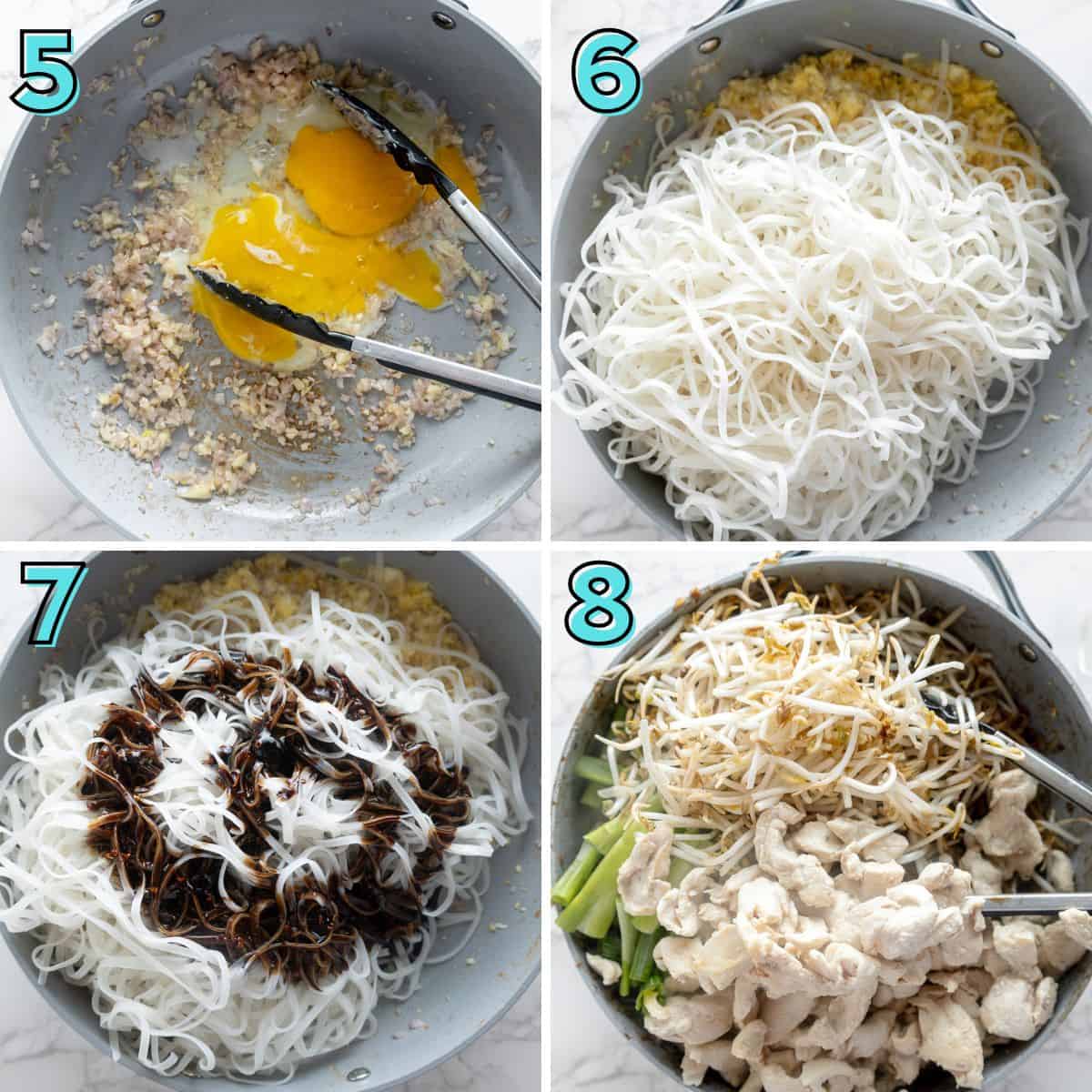
Push the shallots and garlic to one side of the skillet, and crack in both eggs. Using your tongs or spoon, scramble the eggs until cooked through. [photo 5]
Add the cooked rice noodles to the skillet, and top with half of the prepared pad thai sauce. Lightly toss so the noodles are somewhat coated with the sauce.[photos 6 & 7]
Top the noodles with the cooked chicken, green onions, and bean sprouts. Pour in ½ of the remaining pad thai sauce, and toss well so that everything is well coated in the sauce. If you prefer a little bit more sauce on the noodles, you can use the remaining ½ of the leftover sauce. [photo 8]
Serve the cooked chicken pad thai with chopped peanuts, a fresh lime wedge, and some extra Thai chilli flakes if you like things extra spicy.
💭 Expert Tips
- Soak the noodles well: You want to ensure that the noodles are soft and pliable. If you rush the soaking process, you may have tough and hard noodles that also will not absorb the sauce as well.
- Prep all your ingredients before cooking: Have all your ingredients prepped and ready to go before you start cooking. This recipe comes together quickly!
- Work quickly: The key to making stir fry dishes is using very high heat. Be sure to balance cooking with high heat, and avoiding burning the ingredients. A constant eye, and stirring or tossing often is key.
🍽 Make Ahead & Storage
You can make the stir fry sauce in advance and store it in an airtight container in the refrigerator. The flavors will meld together, and you can have it ready to go when you're ready to cook.
To prep in advance, you can cut and prepare all your ingredients ahead of time, such as chopping vegetables, and slicing the chicken. Store them in separate containers in the refrigerator until you're ready to start cooking.
Leftover pad thai noodles can be stored in an airtight container in the refrigerator for 2-3 days. As the noodles may become slightly dry as they sit in the fridge, you might need to add a splash of water when reheating.
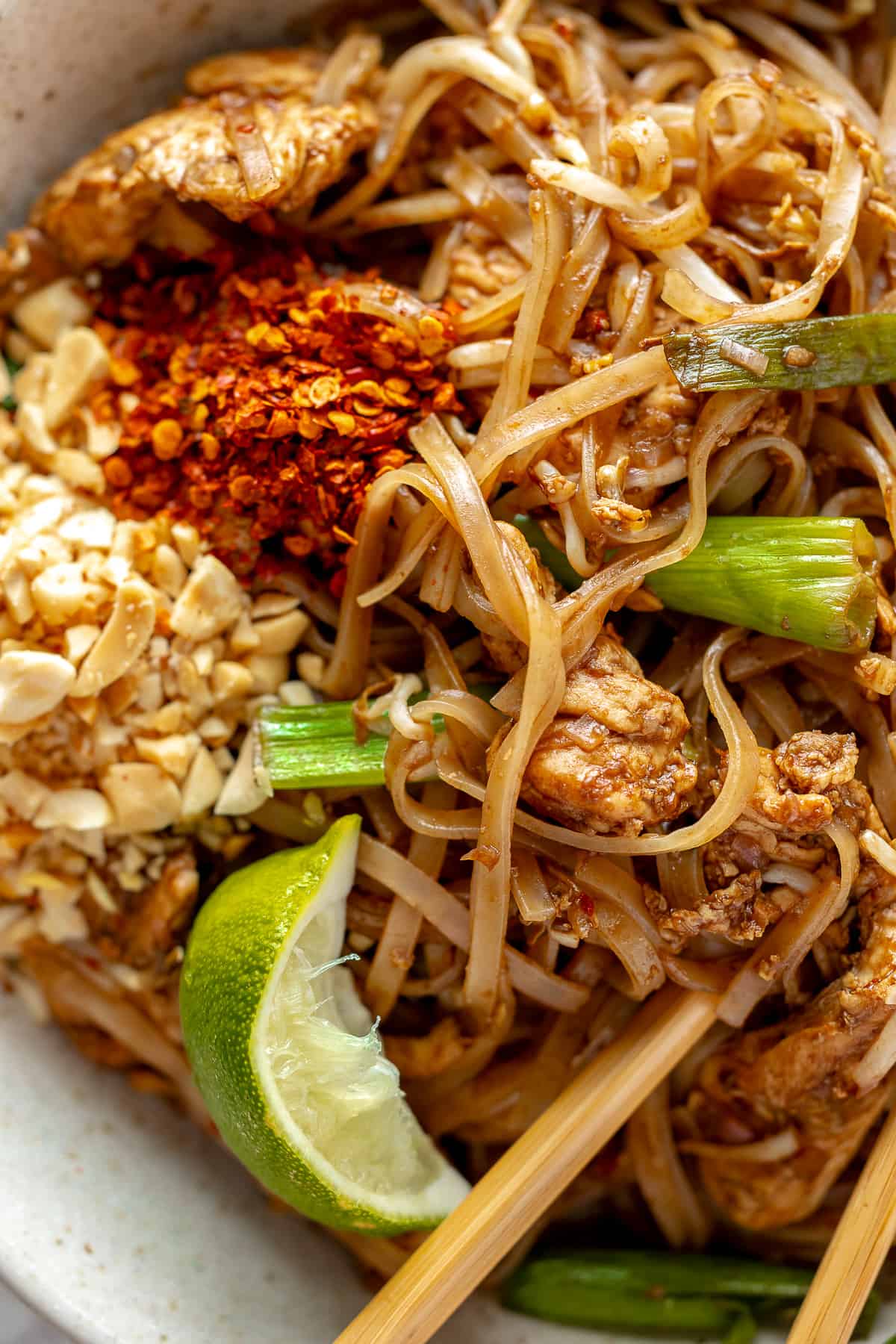
⭐ Recipe FAQs
After soaking the rice noodles, you can toss them with a small splash of oil to prevent sticking. If the noodles stick during cooking just add a little more oil and use your tongs to separate them.
Be sure to taste and adjust the pad thai sauce before adding it to the dish. If it's too sweet, add more lime juice or fish sauce. If it's too sour, add a bit more sugar. The type of tamarind pulp that you are using can make a big difference in the flavor of the sauce.
Overcooking the rice noodles or overcrowding the pan can lead to mushy pad thai. Cook the noodles just until they are pliable and stir-fry ingredients in batches to maintain high heat, especially if you do not have a very large skillet available.
Looking for more meal inspiration? Subscribe to our newsletter for weekly recipe roundups, straight to your inbox! Follow us on our socials, on Instagram, Pinterest and Facebook! If you try one of our recipes, let us know how it was by rating and commenting!

Spicy Bangkok Chicken Pad Thai
Equipment
- Wok optional
Ingredients
- 4 oz Rice stick noodles (dry )
- 2 Boneless, skinless chicken breasts (thinly sliced)
- 2 Shallots (finely minced)
- 6 cloves Garlic (finely minced)
- 2 large Eggs
- ¼ cup Tamarind paste (thai style)
- ⅛ cup Fish sauce
- ¼ cup Water
- 3 tablespoon Brown sugar
- 1 tablespoon Thai chilli flakes
- 1 bunch Scallions (cut into long pieces)
- 1 ½ cups Mung bean sprouts
To Serve
- Unsalted peanuts (finely chopped)
- Limes (cut into wedges)
- Thai chilli flakes (to taste)
Instructions
- Mix together the ingredients for the pad thai sauce in a liquid measuring cup or a small mixing bowl. Start with half of the thai chilli flakes, and adjust to your taste.¼ cup Tamarind paste, ⅛ cup Fish sauce, ¼ cup Water, 3 tablespoon Brown sugar, 1 tablespoon Thai chilli flakes
- Bring 1L of water to a boil in a kettle or in a large pot on the stove. Pour the boiling water over the rice stick noodles in a large heat-safe bowl. Submerge the rice sticks in the water completely using tongs, and leave the noodles to soften for 10-15 minutes. Once the noodles are pliable and tender, drain and set aside.4 oz Rice stick noodles
- Heat a large skillet or wok over high heat. Add 2 tablespoons of vegetable oil to the skillet, and add the sliced chicken breasts. Leave the chicken to sear for 1-1 ½ minutes before giving it a toss. Season the chicken with a light sprinkle of salt, and remove the chicken from the skillet once cooked through. Keep aside in a bowl.2 Boneless, skinless chicken breasts
- Add another 2 tablespoons of oil to the same skillet or wok. Lightly saute the minced shallots and garlic, until they are slightly softened.2 Shallots, 6 cloves Garlic
- Push the shallots and garlic to one side of the skillet, and crack in both eggs. Using your tongs or spoon, scramble the eggs until cooked through.2 large Eggs
- Add the cooked rice noodles to the skillet, and top with half of the prepared pad thai sauce. Lightly toss so the noodles are somewhat coated with the sauce.
- Top the noodles with the cooked chicken, green onions, and bean sprouts. Pour in ½ of the remaining pad thai sauce, and toss well so that everything is well coated in the sauce. If you prefer a little bit more sauce on the noodles, you can use the remaining ½ of the leftover sauce.1 bunch Scallions, 1 ½ cups Mung bean sprouts
- Serve the cooked chicken pad thai with chopped peanuts, a fresh lime wedge, and some extra Thai chilli flakes if you like things extra spicy.Unsalted peanuts, Limes, Thai chilli flakes
Notes
- Soak the noodles well: You want to ensure that the noodles are soft and pliable. If you rush the soaking process, you may have tough and hard noodles that also will not absorb the sauce as well.
- Prep all your ingredients before cooking: Have all your ingredients prepped and ready to go before you start cooking. This recipe comes together quickly!
- Work quickly: The key to making stir fry dishes is using very high heat. Be sure to balance cooking with high heat, and avoiding burning the ingredients. A constant eye, and stirring or tossing often is key.
- Adjust to your taste: Keep in mind that tamarind pastes can vary in sourness based on the brand you are using. I recommend adjusting the flavors as needed, as you may require additional sugar, etc.


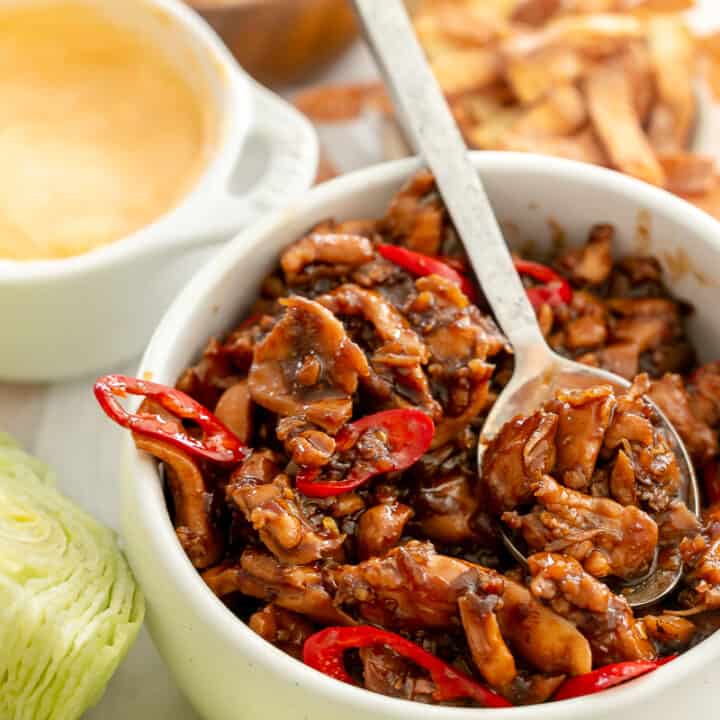
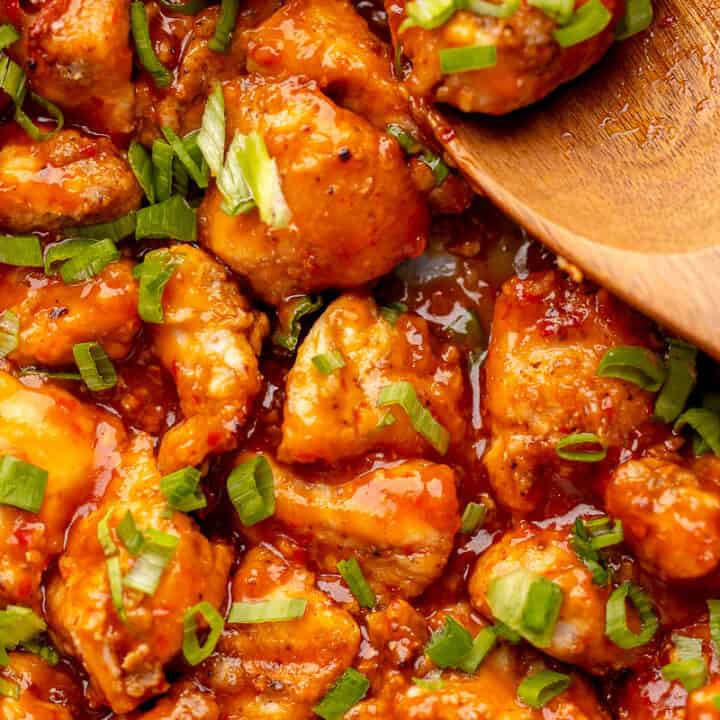
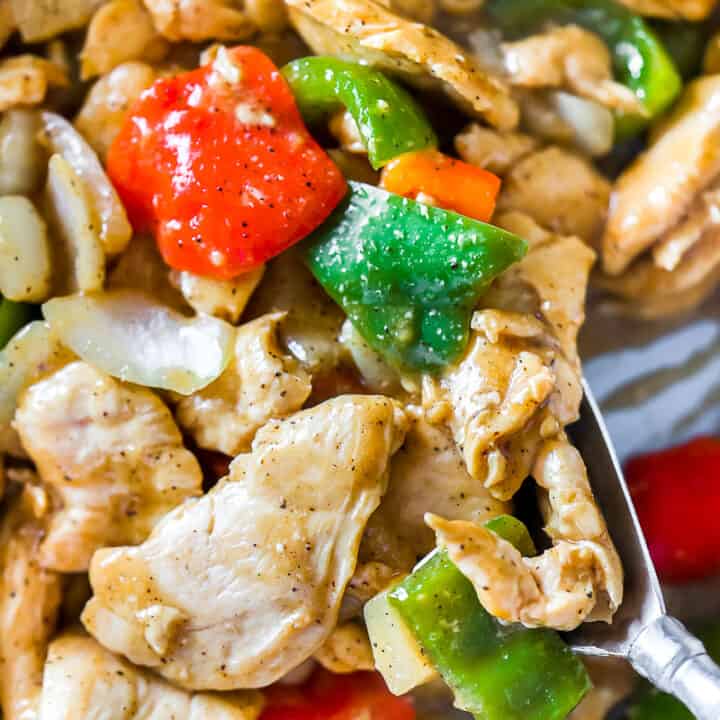
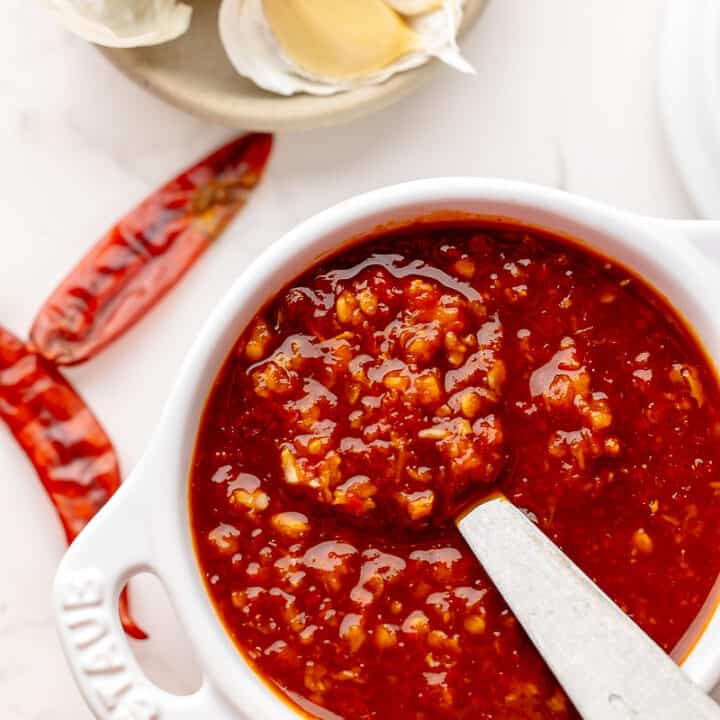
Comments
No Comments